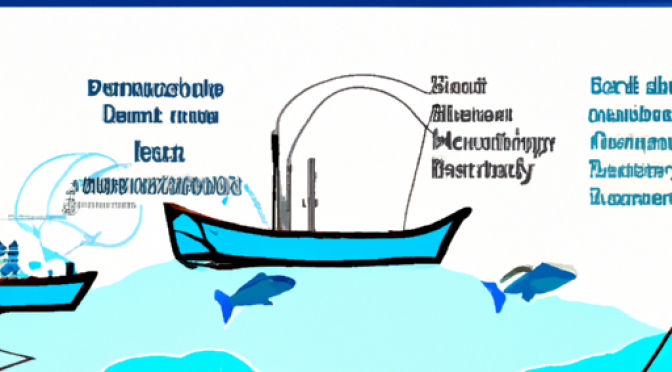How can Artificial Intelligence help sustainable fisheries?
Sustainable fishing is key to preserving marine ecosystems and maintaining fish stocks. The development of Artificial Intelligence (AI) technologies offers the fishing industry the opportunity to operate in a more efficient and sustainable way. The application of AI in fisheries offers a number of benefits that can contribute to the conservation of fish stocks and the sustainability of fishing activities.
Automated fishing nets
AI enables the development of automated fishing nets that can make fishing processes more efficient and sustainable. AI algorithms enable networks to identify optimal fishing areas, estimate fish stock sizes and optimise fishing times. This allows fishermen to fish more efficiently, minimising unwanted by-catch and reducing damage to fish stocks.
Data collection and analysis
AI enables the fishing industry to collect and analyse large amounts of data on the state of the marine ecosystem and fish stocks. AI algorithms can process and interpret data quickly, allowing fishermen to obtain real-time information on the size, distribution and health of fish stocks. This helps fishermen to plan fishing activities more efficiently, minimising the risk of overfishing and promoting sustainable fishing.
Optimising fishing quotas
The use of AI allows the optimisation of fishing quotas for sustainable fishing. AI algorithms are able to determine appropriate fishing quotas based on data, taking into account the size of the fish stock, the state of the fishing grounds and the objectives of sustainable fishing. This helps minimise overfishing and ensure the long-term sustainability of fish stocks.
Monitoring fishing activity
AI technologies allow monitoring of fishing activity in marine areas. AI algorithms are able to monitor the movements and activities of fishing vessels and signs of illegal fishing using automated systems. This allows authorities to control and regulate fishing activities more effectively, promoting sustainable fishing and the conservation of marine ecosystems.
The application of Artificial Intelligence in fisheries offers promising opportunities to promote sustainable fishing. Automated fishing nets, data collection and analysis, optimisation of fishing quotas and monitoring of fishing activities can all contribute to the conservation of fish stocks and the sustainability of fishing activities. The development of AI technologies could provide further opportunities for sustainable fisheries in the future.
∑: fishing, sustainable, stocks, activities, fisheries, marine, automated, algorithms, quotas
